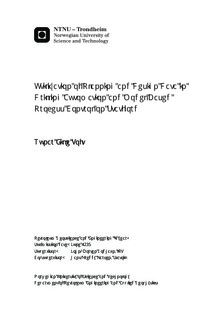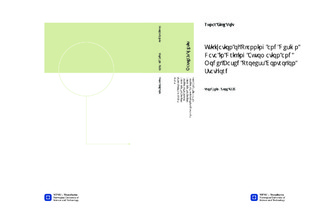| dc.contributor.advisor | Godhavn, John-Morten | nb_NO |
| dc.contributor.advisor | Larsen, Hans Freddy | nb_NO |
| dc.contributor.author | Toft, Runar Eike | nb_NO |
| dc.date.accessioned | 2014-12-19T12:17:02Z | |
| dc.date.available | 2014-12-19T12:17:02Z | |
| dc.date.created | 2013-08-12 | nb_NO |
| dc.date.issued | 2013 | nb_NO |
| dc.identifier | 640183 | nb_NO |
| dc.identifier | ntnudaim:9322 | nb_NO |
| dc.identifier.uri | http://hdl.handle.net/11250/239998 | |
| dc.description.abstract | Drilling of oil wells has through time become increasingly difficult due to less accessible oil and depleted reservoirs. Well stability issues and other drilling problems are frequently experienced during drilling of challenging wells, resulting in large costs related to non-productive time. Automated drilling systems are developed to reduce excessive costs from non-productive time through model based process control.The automated drilling system Drilltronics is selected for first use implementation of automated drilling at the Statoil operated Statfjord oil field in the North Sea. Model based process control systems such as Drilltronics uses advanced dynamic wellbore models to monitor the well during the drilling process and to take control of the operation if necessary to prevent incidents. Drilltronics continuously safeguards the well and provides safety triggers by comparing formation parameters to expected modeled values for the drawworks, the top drive and the mud pumps. Some functions of Drilltronics have already been tested in a pilot at Statfjord C with promising results, but some challenges related to data management, data quality and work processes were discovered. Real-time measured data can to some degree be controlled by the use of redundant sets of sensors, but system configuration data may be more challenging to both collect and verify.This thesis suggests how planning and design data can be utilized as system configuration data in the implementation of Drilltronics on Statfjord. Challenges related to the quality of available planning and design data are also studied, in addition to challenges related to work processes.The result of the analysis indicates that the quality of current planning and design data may be insufficient as input for model based process control. A suggestion for the utilization of actual data instead of or in addition to planning data is proposed, which will take advantage of offshore data acquisition and verification. Consequently there is a need for establishment of new work processes offshore with the implementation of Drilltronics. Suggestions to new work processes are presented. | nb_NO |
| dc.language | eng | nb_NO |
| dc.publisher | Institutt for petroleumsteknologi og anvendt geofysikk | nb_NO |
| dc.title | Utilization of Planning and Design Data in Drilling Automation and Model Based Process Control on Statfjord | nb_NO |
| dc.type | Master thesis | nb_NO |
| dc.source.pagenumber | 138 | nb_NO |
| dc.contributor.department | Norges teknisk-naturvitenskapelige universitet, Fakultet for ingeniørvitenskap og teknologi, Institutt for petroleumsteknologi og anvendt geofysikk | nb_NO |

